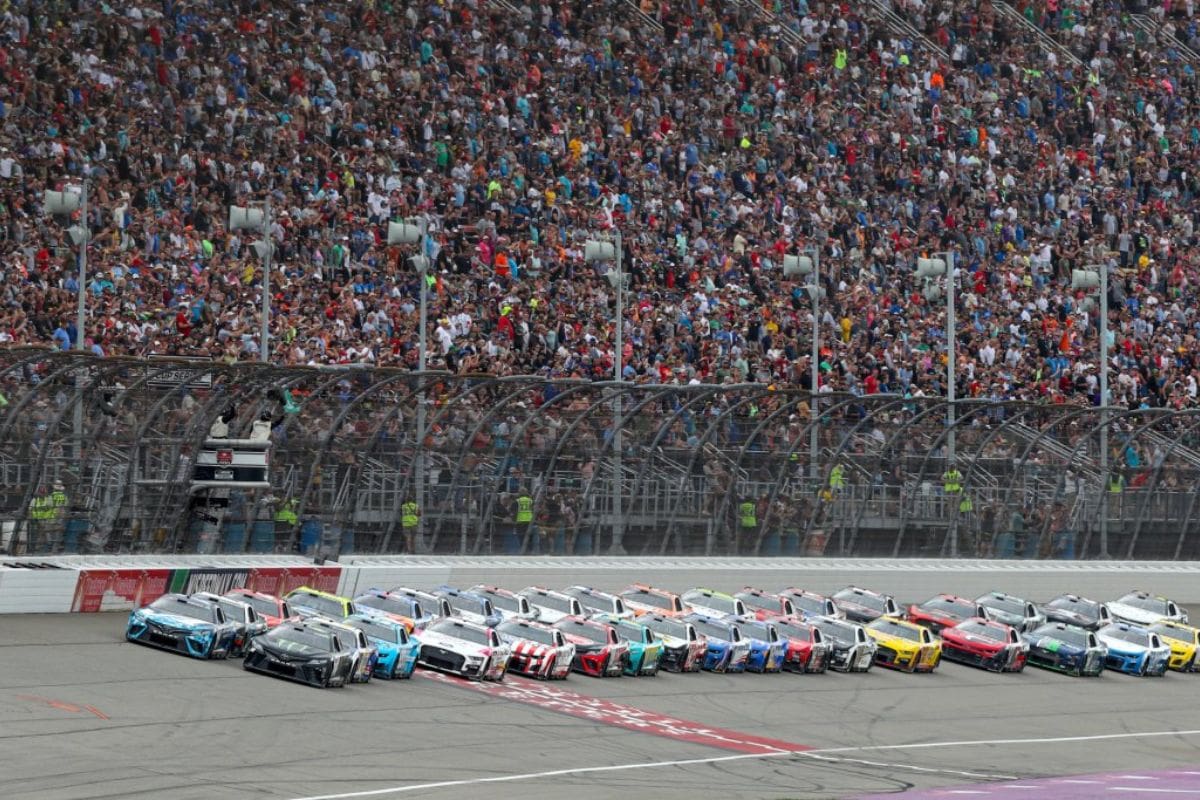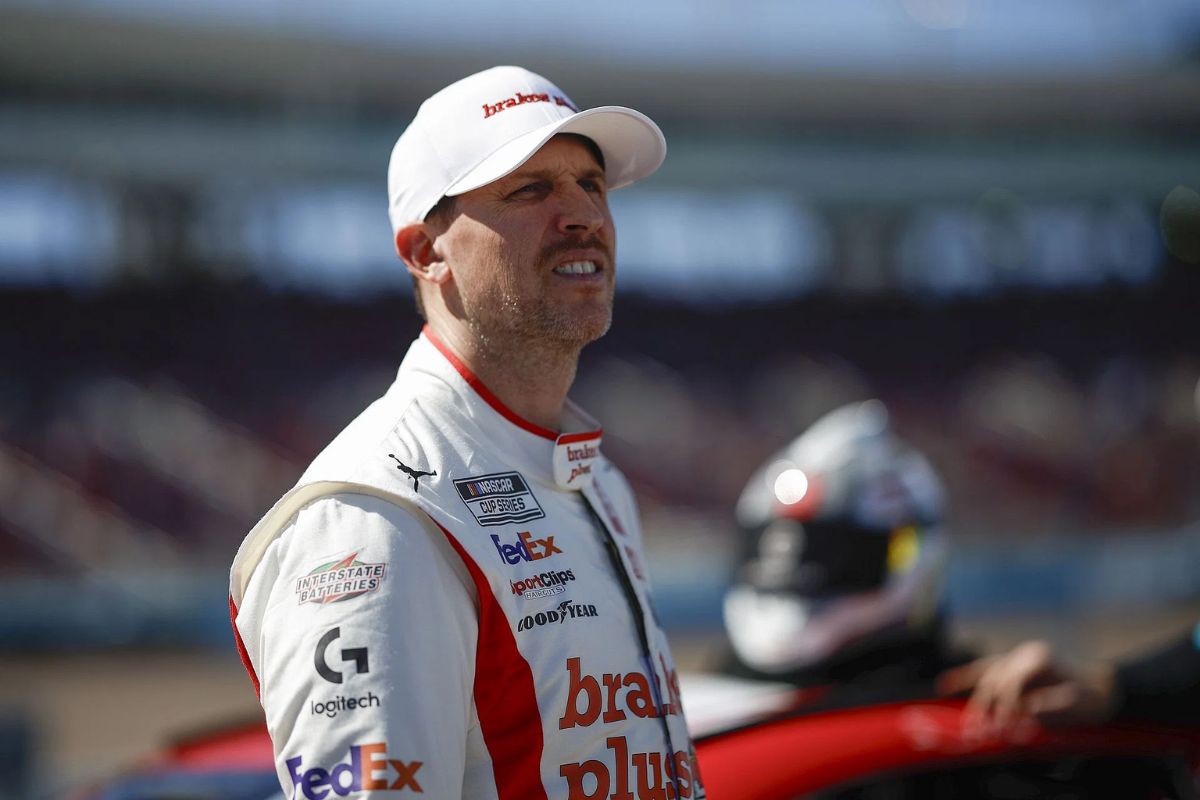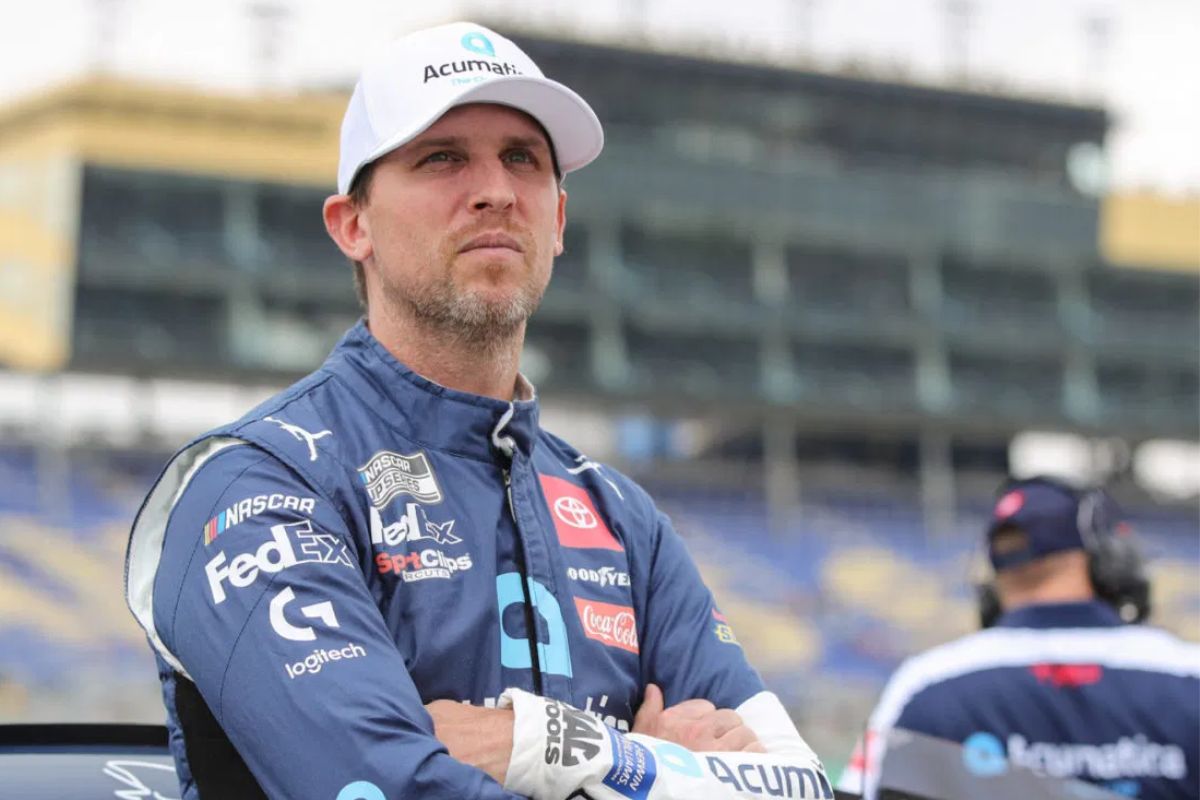Denny Hamlin’s Michigan Spin: Denny Hamlin‘s recent spin at Michigan International Speedway exposes the intricate interplay between driver strategy and vehicle dynamics in NASCAR racing. The incident, notably influenced by Bubba Wallace’s on-track decisions, raises questions about the fine line that separates tactical actions from perilous miscalculations. As Hamlin navigates the aftermath, his reflections reveal not only the physical challenges of maintaining control at high speeds but also the psychological toll on drivers facing such precarious situations. What implications might this incident have for Hamlin’s racing philosophy moving forward?
Key Highlights
- Bubba Wallace’s strategy of disrupting Hamlin’s airflow led to a significant loss of control during the Michigan race.
- Hamlin’s spin was caused by dirty air, which diminished his car’s downforce and grip while cornering.
- The incident highlights the delicate balance drivers must maintain between aggression and precision on the track.
- Hamlin’s reflections emphasize the psychological burden of racing and the importance of tactical decision-making.
- Future races will require Hamlin to refine his aerodynamic strategy and effectively manage tire and fuel dynamics.
Bubba Wallace’s Unintentional Impact on Denny Hamlin
In the high-stakes environment of NASCAR, even unintentional actions can have considerable repercussions, as presented by Bubba Wallace’s influence on Denny Hamlin during the Michigan race. The aerodynamic intricacies of NASCAR racing mean that a single miscalculation can cascade into disastrous outcomes.
Wallace, while likely unaware, executed a maneuver that disrupted the airflow around Hamlin’s No. 11 Toyota, a critical factor in maintaining vehicle control.
Hamlin, who had started from the pole, found himself in an untenable position. The term “take the air away” is often employed by crew chiefs to prevent trailing cars from gaining ground. In this instance, Wallace’s actions inadvertently created an aerodynamic mess that contributed to Hamlin’s loss of control. The result was a smoking wreck that not only impacted Hamlin’s race but also represented the delicate balance drivers must maintain in their interactions on the track.
This incident follows a troubling trend for Hamlin, who had already faced challenges the previous week when Austin Dillon’s aggressive driving resulted in a collision.
The Michigan race revealed the unforgiving nature of the track’s characteristics, which can amplify the effects of such unintentional actions. It serves as a reminder that while drivers are trained to navigate complex racing dynamics, the interplay between them can lead to unforeseen consequences, highlighting the importance of awareness and precision in every lap.
Michigan International Speedway’s Unique Characteristics
Michigan International Speedway stands out in the NASCAR circuit due to its unique characteristics that greatly influence race dynamics. As the fastest racetrack in NASCAR, its two-mile oval configuration and 18 degrees of banking in the turns facilitate high corner speeds, allowing drivers to investigate multiple racing grooves. This design not only improves overtaking opportunities but also introduces a notable drafting element, akin to what is experienced at superspeedways like Daytona and Talladega.
“Much like in Daytona and Talladega, the speed is so high here in Michigan, that when the trail car gets directly in the way on the straightaway, they use that weight to pull up. But then when you get to the corner, you have got to get out of this dirty air.”-(nbc)
The interplay of speed and aerodynamics is essential at Michigan. Drivers can employ the massive draft created by trailing vehicles to conserve fuel, a tactic seen during the Daytona 500. However, the challenge lies in maneuvering the “dirty air” produced by leading cars, particularly when entering corners. Such dynamics require a subtle understanding of vehicle handling and strategy.
Explaining why Denny Hamlin spun while racing for the lead at Michigan. #NASCAR pic.twitter.com/yhB8OipjmN
— NASCAR on NBC (@NASCARonNBC) August 18, 2024
The Spin and Its Technical Explanation
During a significant moment in the race, Denny Hamlin‘s encounter with dirty air presented the delicate balance of aerodynamics at Michigan International Speedway. As Hamlin pursued Bubba Wallace, the dynamics of airflow became vital.
When a car is positioned closely behind another, it enters a zone of disturbed air—referred to as dirty air—where the normal airflow is disrupted. This condition diminishes downforce, leading to a loss of grip, particularly when entering a corner.
“When you get out of that dirty air that drives all the air underneath the car, the downforce gets created and sucks the car into the racetrack. You can do that on the left side of the car, or on the right side. Either way, it makes downforce. The problem is, when you are right behind that car, that’s no man’s land. Good on the straightaway, bad in the corner – that’s exactly what we saw happen with that 11 right there.”-(nbc experts)
The specialized explanation for Hamlin’s spin can be attributed to this aerodynamic phenomenon. Experts note that while following closely can be advantageous on straightaways, it becomes perilous during cornering.
Specifically, when Hamlin found himself in this no-man’s-land, the front end of his car began to slide as he turned into the corner. The loss of downforce from the dirty air reduced his steering precision, resulting in an uncontrollable spin.
Veteran drivers, including 1989 Cup champion Rusty Wallace, have demonstrated this point, emphasizing how proximity to another car can induce a front-end slide.
“When you get behind a car, all of a sudden, you go steering into the corner, and the front end starts sliding on you.”-(rusty)
Seven-time champion Jimmie Johnson echoed this sentiment, highlighting the frustration of being faster yet trapped behind another vehicle.
“Yeah, I mean, you can be a half-second faster than someone, catch him, and get two or three cars in and you’re stuck.” -(jimmie)
In Hamlin’s case, the combination of his aggressive pursuit and the inherent challenges of dirty air ended in an unfortunate error, showing just how finely tuned the balance between speed and control must be in NASCAR racing.
Denny Hamlin’s Reflections and Remorse
A moment of introspection followed Denny Hamlin’s ill-fated spin, revealing the weight of his racing decisions. The Michigan incident served as a vivid reminder of the potential consequences of hasty actions. Hamlin’s reflections illuminated the complexities of high-stakes racing, particularly in the context of his earlier tactics at Dover Motor Speedway, where aero-blocking had yielded favorable results. This comparison prompted a deeper analysis of his approach on the track.
“I don’t know how sensitive the area is that I saw. It’s very, very small. But man, you don’t want to knock any car potential out in these scenarios. Just kicking myself. All these Michigan races, we’re so fast, and I just can’t quite put it all together. Certainly, put us in a bad spot there in Stage 1. Now I just got a little extra time to think about my sins.”-(denny)
- The importance of precision in racing tactics.
- The fine line between aggression and recklessness.
- Learning from past successes and failures.
- The psychological burden of performance demands.
- The necessity of a measured response in dynamic environments.
This self-critique highlights an evolving understanding of his role within the sport, recognizing that each decision is intricately tied to the broader context of competition.
As Hamlin navigates this moment of reckoning, it becomes clear that his reflections may lay the groundwork for a more calculated approach in future races.
Hamlin’s Future Prospects
As Denny Hamlin looks ahead, the lessons learned from his recent misstep could prove vital in shaping his strategy for upcoming races. His performance at Michigan highlighted the necessity for a refined aerodynamic approach. To regain his competitive edge, Hamlin must adapt his driving style to optimize the car’s downforce, ensuring he remains agile amidst fierce competition.
With a strong understanding of the track dynamics, he is well-positioned to utilize his past successes—having secured two victories at Michigan—as a foundation for his race strategy.
Hamlin’s ability to navigate the details of aerodynamics will be critical in contending with fellow frontrunners. The upcoming races will demand not only mechanical skill but also an awareness of tire management and fuel strategies. Observing how other top drivers react to changing conditions will be fundamental in crafting a race plan that can outmaneuver his adversaries.
The psychological aspect of racing cannot be overlooked. Hamlin’s reflection on his recent experiences should serve as motivation to foster resilience amidst setbacks.
News in Brief: Denny Hamlin’s Michigan Spin
The incident involving Denny Hamlin at Michigan International Speedway presents the intricate interplay of strategy and physics in NASCAR racing. The unintended consequences of Bubba Wallace‘s actions emphasize the critical importance of maintaining ideal airflow and downforce.
This event not only highlights the fine line between aggressive racing tactics and potential recklessness but also serves as a crucial moment for Hamlin’s future approach. The mental and specialized challenges faced by elite drivers remain a defining aspect of the sport.
ALSO READ: Denny Hamlin Dismisses Injury Concerns: Will His Shoulder Hold Up Under Pressure?




